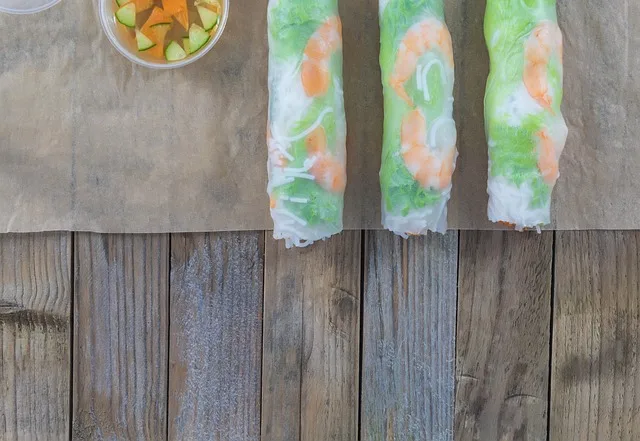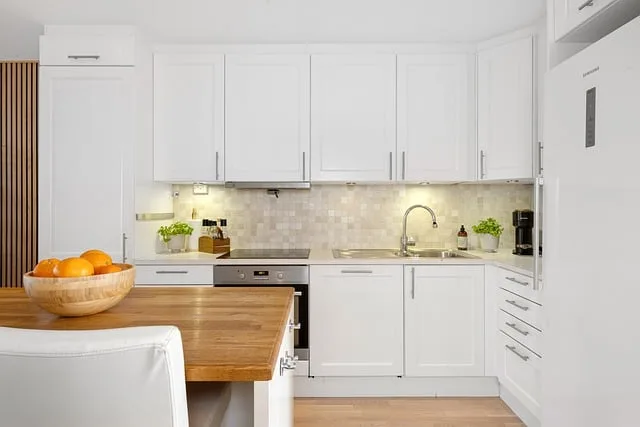Now, you might be wondering, “Is it really that easy?” Well, it’s not rocket science, but it does require a bit of elbow grease and the right approach. First off, you’ll want to start with clean, sanded cabinets. Imagine trying to paint a canvas that’s covered in dust—yikes! So, grab some sandpaper and get to work. This step is crucial because it helps the stain adhere better, ensuring a smooth finish.
Once your cabinets are prepped, it’s time to choose your stain. Do you want a rich walnut hue or a light oak finish? The world is your oyster! Just remember, the color you pick can dramatically change the vibe of your kitchen. It’s like choosing the right outfit for a big event; you want to make a statement.
When you’re ready to apply the stain, use a brush or a cloth, depending on the look you’re going for. Think of it like applying sunscreen—smooth it on evenly to avoid streaks. And don’t rush! Let the stain soak in for a bit before wiping off the excess. This is where the magic happens, as the wood grain starts to pop.
So, can you stain kitchen cabinets? You bet! With a little patience and creativity, you can turn your kitchen into a space that feels brand new, all while keeping your budget intact.
Transform Your Space: The Ultimate Guide to Staining Kitchen Cabinets
Imagine walking into your kitchen and feeling that rush of excitement as you see those beautifully stained cabinets gleaming in the light. It’s not just about aesthetics; it’s about creating a space that feels like home. But where do you start? First, you’ll want to choose the right stain. Think of it as picking the perfect outfit for a big night out. Do you want something bold and dramatic, or are you leaning towards a soft, natural look?
Once you’ve settled on a stain, prep work is key. Just like you wouldn’t paint a wall without a primer, don’t skip the sanding and cleaning steps. This is where the magic begins! Sanding your cabinets not only helps the stain adhere better but also reveals the beautiful wood grain underneath. It’s like uncovering a hidden treasure!
Now, let’s talk application. Use a brush or a rag—whichever feels right for you. Apply the stain in even strokes, and don’t be afraid to experiment. If you want a deeper color, just add another coat. It’s all about finding that perfect shade that makes your heart sing.
And remember, patience is your best friend here. Allow the stain to dry completely before sealing it with a topcoat. This step is crucial; it protects your hard work and keeps those cabinets looking fabulous for years to come. So, are you ready to dive in and give your kitchen the glow-up it deserves?
Stain vs. Paint: Which Is the Best Choice for Your Kitchen Cabinets?
On the flip side, paint is like a bold statement piece. It can completely transform your kitchen, giving it a fresh, modern vibe. Think of it as a new outfit for your cabinets—one that can be changed whenever you feel like a refresh. Paint offers a wider range of colors, so if you’re dreaming of a vibrant blue or a soft pastel, it’s your best bet. However, keep in mind that paint can chip and may require more upkeep over time.
Now, let’s talk durability. Stains tend to penetrate the wood, providing a protective layer that can withstand the daily hustle and bustle of a kitchen. Paint, while beautiful, can sometimes be more susceptible to wear and tear, especially in high-traffic areas. So, if you’re a cooking enthusiast who loves to whip up gourmet meals, you might want to consider how each option holds up against splashes and spills.
Ultimately, the choice between stain and paint boils down to your style and lifestyle. Are you looking for something low-maintenance that highlights the wood’s natural beauty, or do you want to make a bold statement with a splash of color? The decision is yours!
Revive Your Kitchen: How to Successfully Stain Your Cabinets Like a Pro
First off, think of your cabinets as a blank canvas. Just like an artist prepares their palette, you need to prep your cabinets. Start by removing all the hardware and giving them a good clean. Dust and grease are like that pesky fly at a picnic—totally unwelcome! Once they’re squeaky clean, it’s time to sand. This step is crucial; it’s like giving your cabinets a fresh haircut before the big reveal. Sanding helps the stain adhere better, ensuring a smooth finish.
Now, let’s talk about the stain itself. Choosing the right color is like picking the perfect outfit for a first date—go for something that complements your style! Whether you want a rich walnut or a light oak, make sure to test it on a small area first. You wouldn’t want to commit to a color that doesn’t vibe with your kitchen’s personality, right?
When you’re ready to apply the stain, use a brush or a rag, and work in the direction of the wood grain. Think of it as giving your cabinets a gentle massage—be kind and thorough! After applying, let it sit for a few minutes before wiping off the excess. This is where the magic happens; you’ll see the wood come alive with color!
From Drab to Fab: The Art of Staining Kitchen Cabinets for a Fresh Look
Imagine your kitchen as a blank canvas. Staining is like adding a splash of color that brings out the natural beauty of the wood. It’s not just about changing the color; it’s about enhancing the grain and texture, giving your cabinets a rich, warm feel. Think of it as giving your cabinets a stylish makeover, much like a fresh coat of paint can revitalize a room.
Now, you might be wondering, “Is it really that easy?” Absolutely! With a little patience and the right tools, you can achieve stunning results. Start by choosing a stain that complements your kitchen’s vibe. Whether you’re going for a rustic farmhouse look or a sleek modern finish, there’s a stain out there for you.
Preparation is key. Sanding down your cabinets is like prepping a canvas before painting—essential for a smooth finish. Once you’ve prepped, apply the stain with a brush or cloth, and watch as the wood comes to life. It’s almost magical!
And don’t forget about the topcoat. This is your protective layer, ensuring your newly stained cabinets withstand the test of time. Think of it as the icing on the cake, sealing in all that beauty.
So, are you ready to roll up your sleeves and dive into this DIY adventure? Your kitchen deserves a fab upgrade, and staining those cabinets might just be the perfect solution!
DIY Kitchen Makeover: Staining Cabinets Made Easy

Staining your cabinets is like giving them a new lease on life. It’s a simple process that can yield stunning results. First things first, gather your supplies: wood stain, a brush, sandpaper, and some rags. Think of it as gathering your tools for a mini adventure. You’re about to embark on a journey to revitalize your kitchen!
Now, let’s talk about the fun part—choosing your stain color. Do you want a rich walnut for that cozy, rustic vibe, or maybe a sleek gray for a modern touch? The choice is yours! Once you’ve picked your color, it’s time to prep. Sanding your cabinets is crucial; it’s like giving them a fresh canvas to work with. Just imagine painting on a clean, smooth surface versus a rough one—it makes all the difference!

After sanding, wipe down the cabinets to remove any dust. Now, grab your brush and start applying the stain. It’s like spreading butter on warm toast—smooth and satisfying! Remember to work in sections and wipe off any excess stain to avoid a blotchy finish.
The Do’s and Don’ts of Staining Kitchen Cabinets: Expert Tips Revealed
First off, do choose the right stain. Think of it like picking the perfect outfit; you want something that complements your kitchen’s vibe. Whether you’re going for a rustic oak or a sleek walnut, make sure it matches your style. And don’t forget to test it out! A small patch can save you from a big regret later.
Now, here’s a big don’t: don’t skip the prep work. Just like you wouldn’t paint a wall without priming it first, your cabinets need some TLC too. Clean them thoroughly and sand them down to create a smooth surface. This step is crucial; it’s like laying a solid foundation for a house. If you skip it, your stain might not adhere properly, leading to a splotchy finish.
Another do? Use a high-quality brush or cloth for application. Think of it as using a fine paintbrush for a masterpiece. A good tool can make all the difference in achieving that flawless look. And remember, less is more! Apply thin layers and build up to your desired color. It’s much easier to add more than to take away.
On the flip side, don’t rush the drying process. Patience is key here. Allow each coat to dry completely before adding another. It’s like waiting for a cake to cool before frosting it; you want everything to set just right for the best results.
So, roll up your sleeves and get ready to transform your kitchen! With these expert tips, you’ll be well on your way to achieving stunning cabinets that you’ll love for years to come.
Frequently Asked Questions
Can You Change the Color of Stained Kitchen Cabinets?
Yes, you can change the color of stained kitchen cabinets. This typically involves cleaning the surfaces, sanding them to remove the existing stain, and applying a new stain or paint. Proper preparation and the right products will ensure a successful color change and a durable finish.
Can You Stain Kitchen Cabinets Without Stripping?
Yes, it is possible to stain kitchen cabinets without stripping them. This process involves cleaning the surfaces thoroughly, using a deglosser to prepare the finish, and applying a stain that can adhere to the existing finish. This method saves time and effort while still achieving a refreshed look.
How Do You Prepare Kitchen Cabinets for Staining?
To prepare kitchen cabinets for staining, start by removing all hardware and cleaning the surfaces thoroughly to eliminate grease and dirt. Sand the cabinets to create a smooth surface and enhance stain adhesion, using progressively finer grits of sandpaper. After sanding, wipe down the cabinets with a damp cloth to remove dust. Finally, apply a wood conditioner to ensure even stain absorption, especially on softwoods.
How Long Does Staining Kitchen Cabinets Take?
The time required to stain kitchen cabinets varies based on factors such as the type of stain used, the number of coats applied, and the drying time between applications. Generally, the entire process can take anywhere from a few hours to several days. Proper preparation and application techniques can help ensure a smooth finish and reduce overall time.
What Type of Stain is Best for Kitchen Cabinets?
When choosing a stain for kitchen cabinets, consider durability and resistance to moisture and heat. Oil-based stains provide a rich finish and are long-lasting, while water-based stains dry quickly and have lower VOCs. For a natural look, gel stains can be effective, as they adhere well to various surfaces. Always test the stain on a small area to ensure it meets your aesthetic and functional needs.